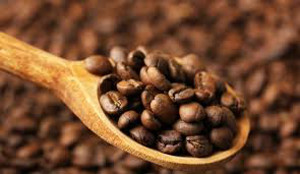 in Vietnam, the top grower of the robusta variety used by Nestlé SA, are probably holding the smallest inventory of unsold beans since 2012 after a record crop, underlining prospects for a global shortage.
in Vietnam, the top grower of the robusta variety used by Nestlé SA, are probably holding the smallest inventory of unsold beans since 2012 after a record crop, underlining prospects for a global shortage.Reserves at the end of last month were 15 per cent of the harvest, compared with 18 per cent in June 2013, the median of estimates from nine traders and analysts compiled by Bloomberg show. That’s the lowest proportion for this time of year since 2012. Production may drop 4 per cent to 1.65 million metric tons in the year starting October from a record 1.72 million tons a year earlier, the survey showed. That’s little changed from 1.64 million tons estimated by traders and analysts last month.
Shrinking stockpiles and a smaller crop in Vietnam may bolster futures in London which have climbed 22 per cent this year on speculation demand will outstrip supply. The shortfall is estimated at 1.6 million bags, or 96,000 tons, by Volcafe Ltd. in the 12 months starting October. Rabobank International increased its robusta price forecasts this month, citing lower inventories and a looming El Nino that could parch parts of Asia. Brazil and Indonesia are the top growers after Vietnam.
“Vietnamese farmers are not interested in selling at this price level, especially as they hear about lower output in Brazil and Indonesia,” said Phan Hung Anh, deputy director of Dak Lak-based Anh Minh Co., Vietnam’s largest private exporter by shipping volume. “The fact that they have lower stockpiles and are not willing to sell will probably drive prices higher.”
Prices Rally
Farmers had 252,000 tons of unsold reserves at the end of June from 263,000 tons a year earlier when the crop was 1.5 million tons, according to the survey. Stockpiles fell as growers boosted sales in June, when robusta prices rallied 4.1 per cent in London after an 11 per cent slump the previous month.
Robusta traded at $2,065 a ton on NYSE Liffe today, rising 11 percent from a three-month low on June 10. Arabica, the variety favoured for specialty drinks such as those made by Starbucks Corp., settled at $1.718 a pound on ICE Futures U.S. in New York on July 3 for an advance of 55 per cent in 2014.
The global market, including arabica and robusta, will have a shortage of 11.3 million bags in 2014-2015, the most in more than a decade, from a surplus of 4.7 million bags this year, Volcafe, a unit of trader ED&F Man Holdings Ltd., said June 3. The estimate takes into account production losses from a drought in Brazil, which is the world’s biggest arabica grower, and smaller crops in Vietnam and in Indonesia.
Weather Threat
The increase in arabica has widened its premium over cheaper robusta beans to about 78 cents a pound on July 3 from a five-year low of 27.9 cents in December. That’s encouraging more roasters to buy robusta, Kona Haque, head of commodities research at ED&F Man in London, said on July 3.
“With El Nino scheduled to arrive in September, we foresee further downward production revisions,” Rabobank analysts including Tracey Allen in London wrote in a report. The bank raised its fourth-quarter forecasts by $50 a ton to $1,900 and the estimate for Jan.-March 2015 by $100 to $1,900.
“Rains have been regular, aiding crop development,” said Anh of Anh Minh Co. “However, water levels are lower than usual so that may cause a shortage in the next season.”
Rainfall recorded in Dak Lak averaged 264.07 millimeters in June at 10 stations, including one in neighboring Dak Nong province, compared with 295.96 millimeters in June last year, according to the Meteorology and Hydrology Department in Dak Lak province, which represents about 30 percent of the harvest.
Average water levels in rivers and streams in Dak Lak in the last 10 days of June were 0.3 metre to 0.5 metre lower than the same period last year and 0.2 metre to 0.4 metre less than the average in previous years, the weather office said July 1.
Australia’s Bureau of Meteorology said this month that it maintained an alert for an El Nino developing by September. The event may bring drought to the Asia-Pacific region and heavier-than-usual rains to South America.





